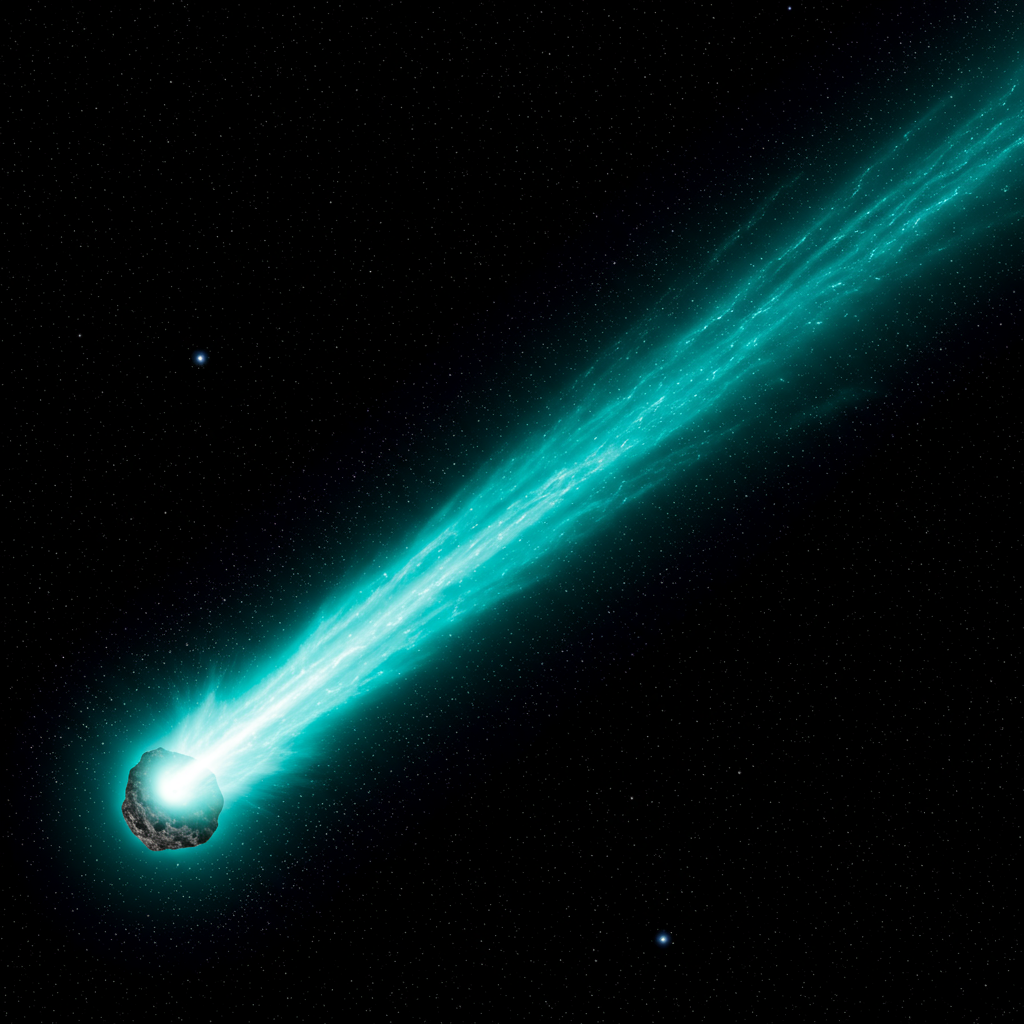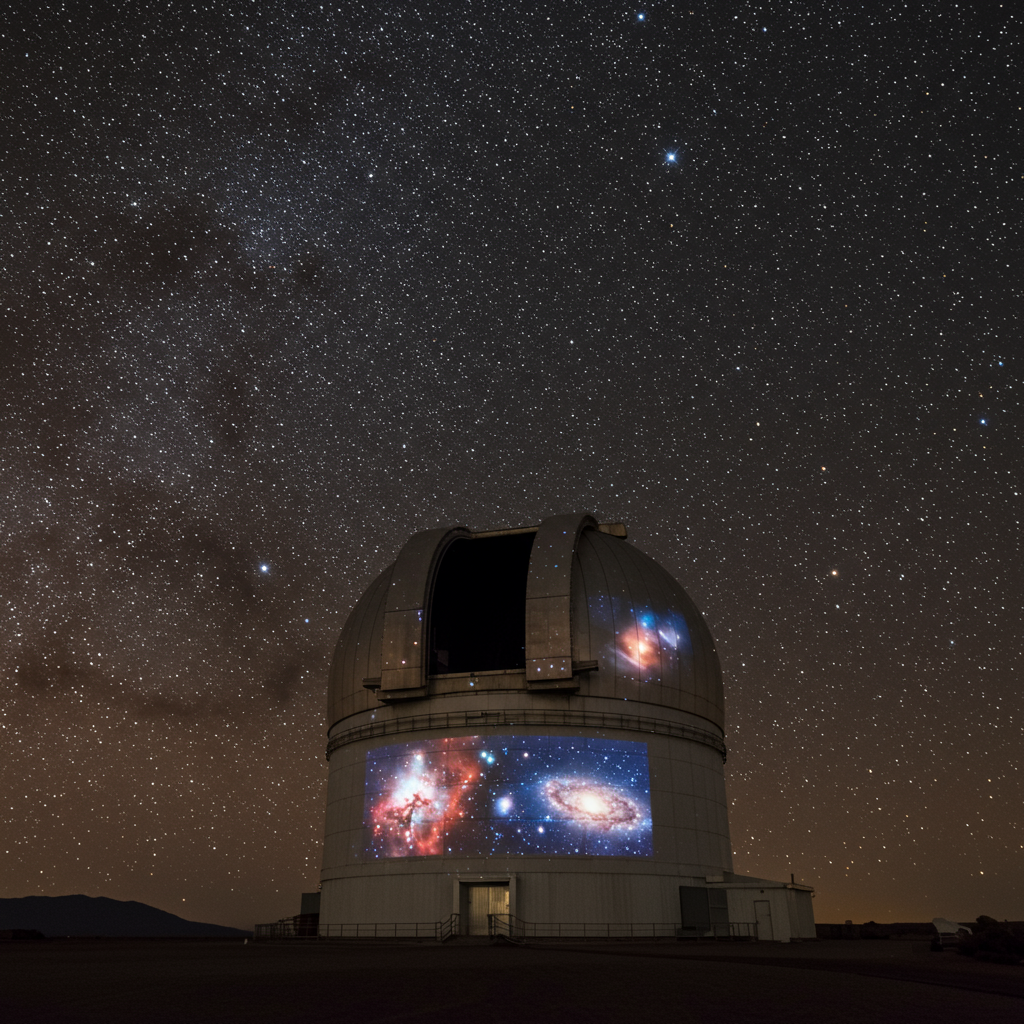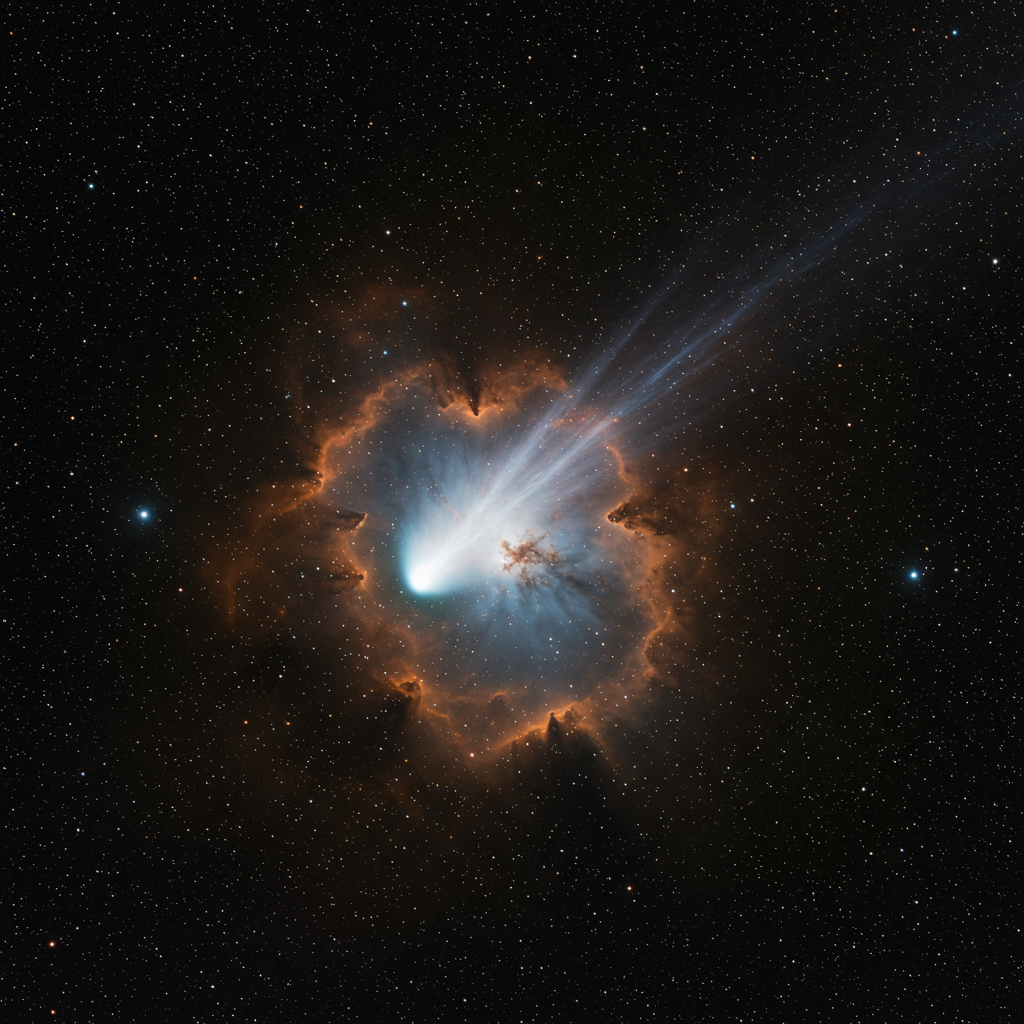A cosmic enigma has captivated astronomers worldwide. 3I/Atlas, a unique interstellar comet, is blazing a trail through our solar system, offering unprecedented insights into the universe beyond our stellar neighborhood. While early observations sparked speculation of an alien spacecraft, scientists have confirmed its cometary nature. This rare visitor is now a pivotal messenger, carrying invaluable clues about how other star systems form and whether our own planetary home is truly an anomaly in the vast cosmos.
Unveiling 3I/Atlas: A Messenger from Deep Space
The discovery of 3I/Atlas in July marked a monumental moment for astrophysics. It represents only the third time humanity has detected an object originating from outside our solar system, making it an extraordinary scientific opportunity. Discovered by the Deep Random Survey remote telescope in Chile, it’s part of the ATLAS (Asteroid Terrestrial-impact Last Alert System) project. This cosmic traveler holds secrets to the formation of distant worlds. Jacqueline McCleary, an assistant professor of physics at Northeastern University, emphasizes its significance. She calls these objects the only “physical observations for within our solar system that originated outside our solar system.” They truly are messengers from afar.
Anomaly in the Cosmos: Early Observations and Speculation
From the outset, 3I/Atlas presented a puzzling spectacle. Astronomers noticed it appeared to emit its own light. It also began forming a “coma”—a proto-tail of gas and dust—while still incredibly far from the Sun. This occurred even beyond Jupiter’s orbit. This behavior is highly unusual for a typical comet. Most comets remain dark. They only develop a coma and tail when solar radiation intensifies. This happens when they approach closer than five astronomical units (Earth-Sun distances) to our star.
This distant glowing sparked early, sensational theories: could it be an alien spacecraft? As McCleary points out, “What else that small and quick would be producing light?” This natural curiosity, fueled by the object’s anomalous activity, led to widespread public and scientific interest. Dr. Laura Driessen, a radio astronomer, humorously called it a “really fun space rock,” underscoring the inherent excitement even without alien contact.
Decoding Its Composition: A Glimpse into Other Worlds
Subsequent, rigorous observations by powerful instruments like the Hubble Space Telescope and the NASA James Webb Space Telescope quickly provided clarity. These confirmed 3I/Atlas as a comet. The observations revealed its true nature, including the presence of a distinctive comet-like tail. What truly sets this visitor apart, however, is its chemical fingerprint.
The James Webb Space Telescope, known for its unparalleled spectroscopic capabilities, uncovered an astonishing detail. 3I/Atlas possesses an extraordinarily high carbon dioxide ice-to-water ice ratio of 8:1. This proportion is among the highest ever recorded for any comet. Carbon dioxide ice, often referred to as “dry ice,” melts at much lower temperatures than water ice. This explains its early outgassing far from the Sun. This unique composition offers scientists an unprecedented look into the conditions prevailing in other solar systems.
Understanding Exoplanetary Formation
Jacqueline McCleary suggests this unusual composition implies that 3I/Atlas’s “parent system maybe was really rich in carbon dioxide or maybe there were weird radiation processes that left a lot of carbon dioxide and boiled away everything else.” By meticulously studying the composition of 3I/Atlas and comparing it with other known interstellar comets like ‘Oumuamua and 2I/Borisov, researchers can gain a “granular level” understanding of solar system formation processes far beyond our own.
For planetary scientists, these interstellar visitors act as cosmic shortcuts. As Mark Norris highlights, they bring samples of other star systems directly to us. This saves immense travel time. Analyzing these pristine materials can refine our models of planetary birth and evolution. It helps us determine whether our own solar system, with its life-sustaining conditions, is a common occurrence or a truly rare cosmic gem.
The Interstellar Journey: Speed, Trajectory, and Origins
3I/Atlas is not gravitationally bound to our Sun; it’s merely a temporary visitor. Its trajectory is defined by a highly hyperbolic orbit, with an eccentricity of 6.2. This far exceeds that of ‘Oumuamua (1.2) and Borisov (3.6). This definitively confirms its deep-space origin and its eventual departure from our solar system. It is currently hurtling towards the Sun at an incredible speed of approximately 61 kilometers (38 miles) per second, or over 200,000 kilometers per hour.
While its precise origin remains elusive, scientists speculate it likely originated from the Milky Way bulge. Its journey began when a “gravitational perturbation”—perhaps a close encounter with a massive planet or another star in its home system—ejected it into interstellar space. This set it on a course that would eventually cross paths with our Sun. Its relatively large size, estimated to be up to 15-20 kilometers (9-12 miles) in diameter, makes it a much more significant and observable target compared to its predecessors.
Approaching and Departing: Observing 3I/Atlas
3I/Atlas is now within Jupiter’s orbit. Its closest approach to Mars is set for October 2. This is followed by its perihelion (closest point to the Sun) on October 29, at a distance of about 210 million kilometers (130 million miles). It will then swing around the Sun and begin its outbound journey. The closest it will come to Earth is on December 19, at approximately 270 million kilometers (167 million miles), posing absolutely no threat.
Astronomers are particularly excited about upcoming observation opportunities. As 3I/Atlas crosses Jupiter’s orbit on its way out, NASA’s Jupiter-orbiting Juno satellite will be ideally positioned for an unprecedented close look. This will be crucial, as much of its volatile carbon dioxide will have boiled off. Observing what remains will reveal the underlying material, offering further clues about its internal structure and enduring composition. Dr. Rebecca Allen emphasizes this unique chance, stating, “We’ve never had an object like this to study before.”
The Avi Loeb Hypothesis: An Alien “Turing Test”?
The initial mystery surrounding 3I/Atlas, particularly its early glowing, inevitably fueled speculation about an alien origin. Harvard astronomer Avi Loeb, known for similar controversial claims regarding ‘Oumuamua, has put forth a provocative theory. He suggests 3I/Atlas could be an advanced alien probe, essentially a “Turing Test” designed to gauge humanity’s intelligence and investigative capabilities.
Loeb suggests that extraterrestrial intelligence would expect Earth-bound scientists to thoroughly investigate any anomalous interstellar object. They would not dismiss it as a common comet. He cites Hubble images showing a “glow” ahead of 3I/Atlas but “no prominent cometary tail behind it.” He also notes a lack of typical spectroscopic signatures as evidence for a “technological object” potentially powered by nuclear energy. He even proposed sending a Morse code message like “Hello, welcome to our neighborhood. Peace!” to solicit a response.
However, the vast majority of mainstream scientists, including NASA and ESA, have refuted Loeb’s claims. Penn State astronomer Jason Wright, among others, has explicitly called Loeb’s analysis of the data “objectively wrong.” The scientific consensus overwhelmingly points to 3I/Atlas being a natural interstellar comet. Its peculiar behavior is explained by its unique, carbon dioxide-rich composition. While intriguing, the alien probe theory lacks the robust evidence required for scientific viability.
Frequently Asked Questions
What makes 3I/Atlas unique among interstellar objects?
3I/Atlas stands out for several compelling reasons. It is only the third confirmed interstellar object ever detected, offering a rare opportunity for direct study of material from outside our solar system. Uniquely, it displayed early outgassing and formed a coma while still incredibly far from the Sun, beyond Jupiter’s orbit, due to its exceptionally high carbon dioxide ice-to-water ice ratio (8:1). This unusual composition provides scientists with a specific chemical fingerprint, a “pristine material” that can reveal granular details about the conditions and formation processes within other star systems. Its larger size (up to 15-20 km) also makes it a better target for detailed observation compared to previous interstellar visitors.
How can scientists further study 3I/Atlas as it leaves our solar system?
As 3I/Atlas begins its outward journey after its closest approach to the Sun in late October, scientists anticipate crucial observation windows. The NASA Juno satellite, currently orbiting Jupiter, is expected to be in an optimal position to get a very close look at the comet. This observation will be particularly insightful because much of the volatile carbon dioxide ice, which contributed to its early activity, will have boiled off. By studying what remains, scientists hope to learn more about its core composition and internal structure, further refining their understanding of interstellar material and the environments in which it formed. This post-perihelion analysis is vital for a complete picture.
Is 3I/Atlas visible to amateur astronomers, and what equipment is needed?
Currently, 3I/Atlas is very faint, with a magnitude of 18.5, making it undetectable by the naked eye or small binoculars. It requires specialized equipment such as a 150-200mm aperture telescope equipped with a CCD camera or a 400mm optical telescope for imaging. While not an easy target, it is expected to brighten significantly to approximately magnitude 11 by its closest approach to Earth in December. At this brightness, it may become an easier target for dedicated amateur astronomers with decent-sized telescopes (around 8 inches or more aperture) and some experience in deep-sky object observation. However, it will likely still appear as a faint, fuzzy smudge rather than a bright, streaking comet.
The Continuing Saga of Cosmic Exploration
3I/Atlas is more than just a comet; it’s a profound scientific treasure. Its journey through our solar system offers an unparalleled chance to gather direct evidence of the chemistry and physics that govern planetary formation in distant stellar nurseries. By analyzing its unique composition and observing its behavior, astronomers are actively piecing together a grander cosmic narrative. This challenges our assumptions about the prevalence of carbon-rich environments or extreme radiation in other systems.
The insights gained from 3I/Atlas will not only deepen our understanding of extraterrestrial material but also help us contextualize our own solar system’s uniqueness. Is the Earth a common outcome, or are we truly on a rare cosmic oasis? This interstellar messenger is helping us quantify that very question. As telescopic technology continues to advance, we can expect to discover even more such enigmatic visitors, each bringing a new piece to the vast puzzle of our universe. Stay tuned as scientists continue to unlock the secrets held within this extraordinary traveler from beyond.




